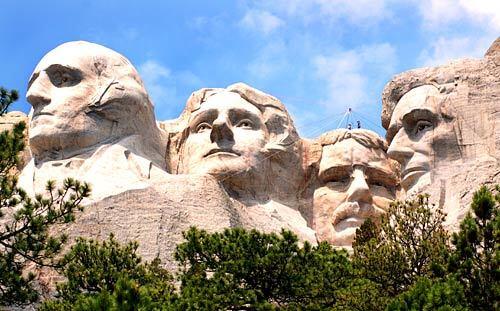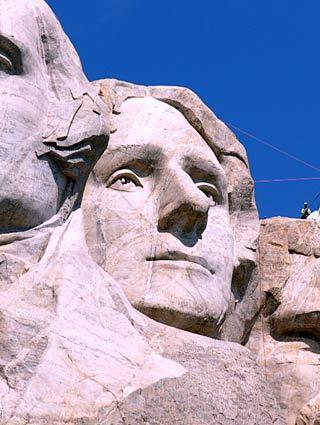
2. Thomas Jefferson is a do-over.
At first, sculptor Gutzon Borglum put Thomas Jefferson on George Washington’s right. But after 18 months of carving, Borglum changed plans, dynamited Jefferson off the mountain and put him in on Washington’s left.
Also, Theodore Roosevelt, the most controversial choice among the four Rushmore presidents, had died only eight years before the blasting began. (Christopher Reynolds / Los Angeles Times)
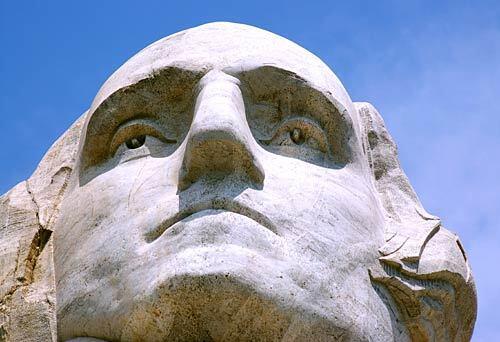
3. George Washington’s nose is longer than the others by about a foot.
His measures 21 feet, top to bottom. The others measure about 20. (Christopher Reynolds / Los Angeles Times)
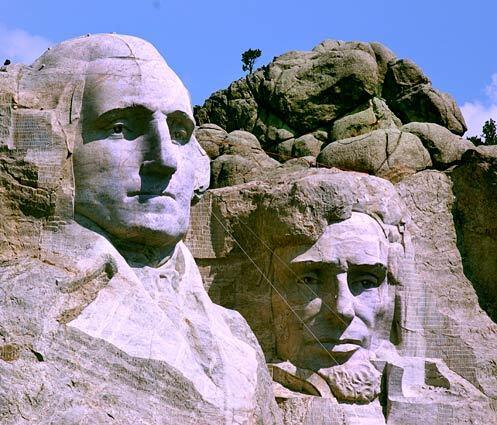
4. It’s free. Sort of.
Though admission to Mt. Rushmore National Memorial is free, it costs $10 to park in the lot. The Rushmore memorial’s annual tourist tally jumped from 2.6 million to 2.9 million in the year after 9/11. But since then, annual visitation has dropped to 2.4 million in 2008, its lowest level in this decade. (Christopher Reynolds / Los Angeles Times)
Advertisement
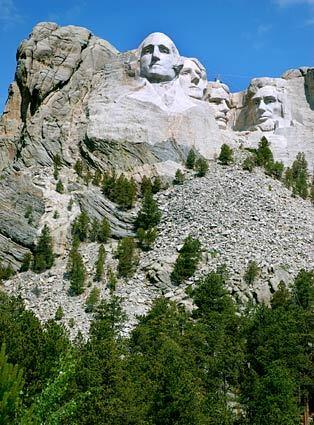
6. Fourth of July fireworks? Nope.
Every year in early July, the National Park Service does set off a big fireworks display above the presidents’ heads. But for several years now, the fireworks have been staged on July 3. This unusual scheduling is intended as a way to prevent the show from conflicting with Independence Day celebrations in Rapid City and other neighboring communities. The show usually starts about 9:15 p.m. (Christopher Reynolds / Los Angeles Times)
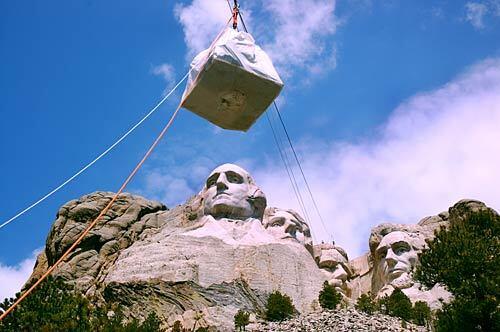
7. The chiseling was the least of the work.
About 90% of the carving at the mountain was done by dynamite. Those blasts removed about 450,000 tons of fine-grained granite from the mountain. These days, maintenance teams use silicone sealant to close cracks in the faces. (Christopher Reynolds / Los Angeles Times)
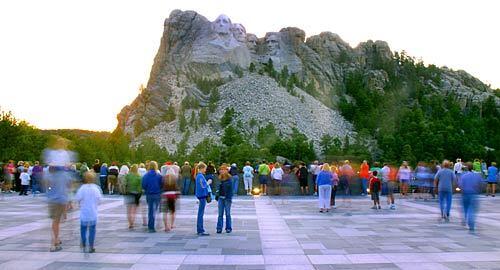
8. If it weren’t for the viewing area nearby, it would be nearly invisible on Google Earth. (Christopher Reynolds / Los Angeles Times)
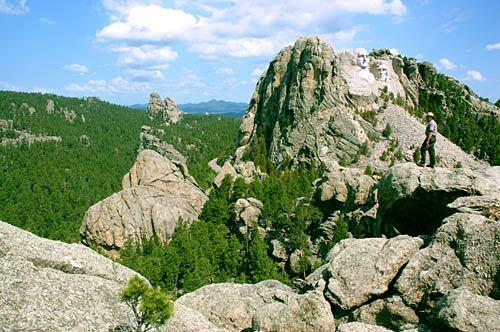
9. If not for inflation, the price tag would be less than a four-bedroom, three-bath house in South Pasadena.
The total cost of creating the Rushmore sculpture was $989,992.32, which included wages for 400 workers. (Adjusted for inflation from 1941 to 2009, the tab would come to $14.4 million.) About 84% of it was paid for by the federal government. (Christopher Reynolds / Los Angeles Times)
Advertisement
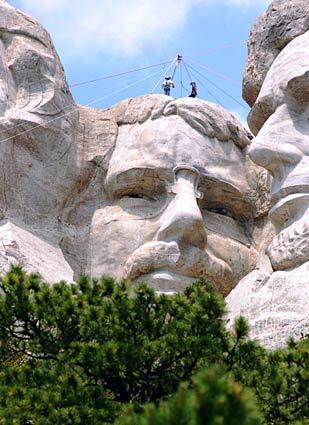
10. Some people, including the U.S. Supreme Court, think the U.S. stole the Black Hills.
In 1868, long before the carving began, the U.S. government promised in a treaty to let the native Sioux Nation tribes keep the Black Hills, including the Rushmore area. But in 1874, gold was found in those hills (and confirmed by Lt. Col. George Custer). After that the U.S. government and prospectors grabbed the land back and forced the Lakota elsewhere.
On July 23, 1980, the U.S. Supreme Court found that land grab was unconstitutional and ordered federal compensation of more than $105 million to the Sioux to settle the case -- but Indian leaders said no, they’d rather have the Black Hills. Writing in 2007, Oglala Lakota Sioux journalist Tim Giago estimated that the unclaimed federal payment, counting interest, had grown to more than $757 million. (Christopher Reynolds / Los Angeles Times)
